Chef Liam Tomlin's gourmet safari in South Africa
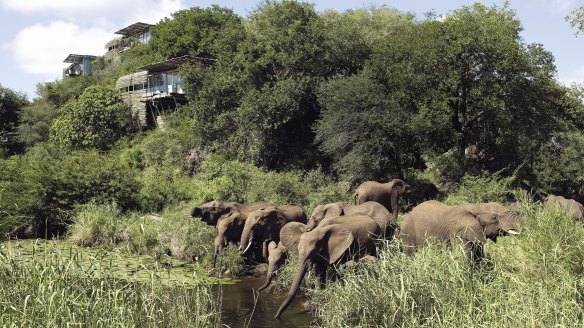
Midway through my phone interview with Liam Tomlin, he pauses. "Oh, you're not gonna believe it," he says. "A monkey's just come in and grabbed the sugar off the table." Cue mild expletive; the amused exasperation of one accustomed to such interruptions. "You turn your back for one minute…" he deadpans, chuckling as he sips his cuppa. And then he's back to explaining his work with luxury lodge and camps company Singita, his new perspective on food – and on life, really.
The Irish-born chef is speaking from Singita Ebony safari lodge in South Africa's Sabi Sand game reserve, one of his many "offices" these days. The first time we talked he was in Cape Town, from where he oversees a burgeoning empire, including three Chefs Warehouses (Bree Street, Beau Constantia, Franschhoek), based on his award-winning "tapas for two" concept; and Thali, an Indian riff on the idea.
Following Banc's rollercoaster ride on Sydney's fine-dining scene (it was awarded three hats and Restaurant of the Year by The Sydney Morning Herald Good Food Guide in 2001 and closed amid debts in 2003), Tomlin had "no idea, honestly" what his next step would be.
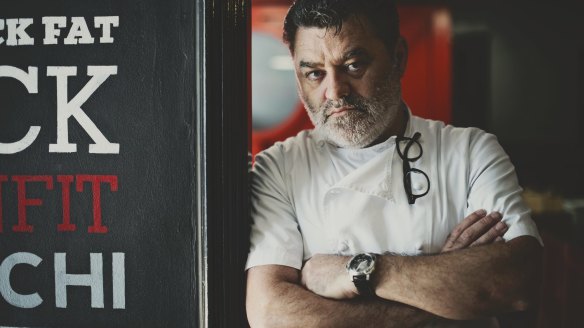
Seeking a similarly sunny lifestyle, he headed to Cape Town, consulting there and abroad before opening a cooking school and retail joint called Chefs Warehouse in 2010. A move to fashionable Bree Street engendered "a little lunch offering": inventive tapas-style dishes, designed for casual sharing but underpinned by Tomlin's famed perfectionism.
An initial visit to this little lunch offering so impressed Singita's founder, conservation champion Luke Bailes (an "incredible human being", says Tomlin), that he ended up offering Tomlin a blank canvas to overhaul Singita's dining experience in line with worldwide food trends. Tomlin got to work in 2016 and hasn't stopped, spending a week each month at whichever lodge he's knee-deep in detail on. "It's just how beautiful the whole thing is," he enthuses. "It's wonderful to be associated with."
After visiting two of Singita's Vogue Living-worthy lodges – sleek, sun-soaked cliffside-clinger Lebombo; and intimate, colourful riverside gem Sweni – on their private 13,000-hectare concession inside Kruger National Park, I get it.
Singita is a world of extraordinary luxury, constantly refined to keep guests falling under its spell.
The experience was essentially one wildly beautiful, sensory feedback loop: refined South African classic dishes (ostrich boerewors, biltong-spiced antelope loin) and global flavours (pan-fried miso salmon with satiny avocado mayonnaise; elegant beef tartare with ponzu, crispy garlic and onion), paired with some of the continent's finest wines; the heart-thumping thrill of tracking a sleek leopard or rare white lion; limbs lulled into jelly at the light-filled spa; the soul-recalibrating joy of watching elephants munching tree branches against a technicolour sunset; bespoke wine tastings; the deeply satisfying ritual of pre-dinner drinks around the firepit. Every sense is heightened here, every hunger sated.
Singita (Shangaan for "place of miracles") is, at its heart, a conservation company dedicated to protecting large swathes of African wilderness for future generations. Part of this involves building outrageously beautiful lodgings with the lightest possible environmental footprint (from sustainable and local food suppliers, to comprehensive energy efficiency and zero-waste goals); immersing guests in their surroundings with phenomenal attention to detail; and investing a portion of revenues into the preservation of the land and its astonishing wildlife, while empowering local communities. The ambitious conservation mission spans 15 lodges and camps in six regions across South Africa, Zimbabwe and Tanzania. The latest is on the edge of Rwanda's Volcanoes National Park, home to endangered mountain gorillas.
As serious as the conservation endeavour is, Singita is also a world of extraordinary luxury, constantly refined to keep guests falling under its spell – and spreading the word.
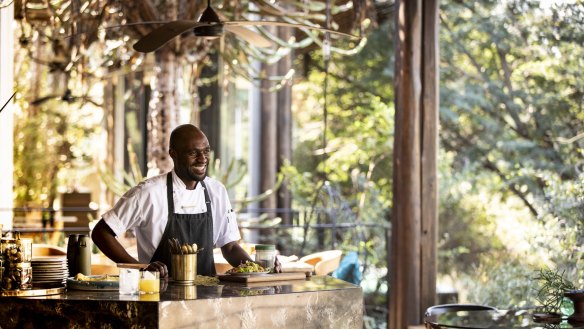
Enter Tomlin. Under his guidance, each lodge is developing its own groove: lighter, tapas-style flavours at Mediterranean-meets-safari-chic Lebombo; dishes categorised by cooking technique ("seared", "smoked", "simmered") to complement Sweni's earthy, African-luxe vibe. Between meals, guests grab charcuterie, cheeses, pastries and potted salads from deli fridges in open-air bars serving vibrant juices and heart-starting coffees.
New kitchens are central, glass-walled hives of creativity where cooking students from local communities work, proudly, alongside chefs with resumes listing top South African restaurants. "I wanted to bring the kitchen and the chefs into part of the experience," explains Tomlin.
Singita's Community Culinary School puts 10 students through an internationally accredited course, including stints across Singita's five South African lodges and Chefs Warehouse in Cape Town. Guest cooking classes in Lebombo's swish demo studio help generate donations to the school, which sees many graduates employed by Singita; one star, TK, interned at Blue Hill at Stone Barns, in upstate New York. "We've got some amazing stories here," says Tomlin, proudly.
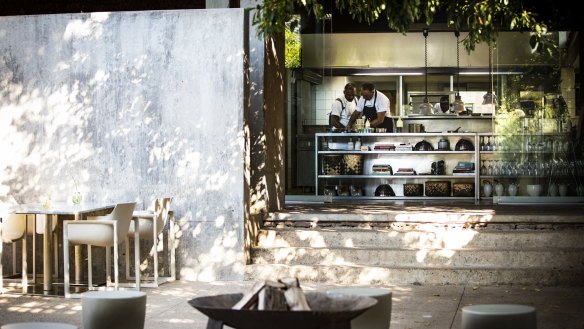
The safari is still the thing, of course; but the food makes a sensational supporting act. The Tomlin touch is everywhere: the top-notch produce, the artful composition of texture and flavour, the perfect temperature of every component, the ideal bite of the risotto he has made famous at Chefs Warehouse. It's not shouty or faffy; it just makes the whole experience more… well, perfect.
"He's always 'on it'," laughs Andrew Nicholson, Singita's group executive chef and Tomlin's affable wingman, over a Lebombo breakfast of mixed bean ragout. "He's got this little notepad… he's always jotting something down, always thinking." Later, I find him wrapping Tomlin's staff birthday present: a leather-bound notebook.
There is mutual warmth and respect here. Staff at all levels speak of Tomlin's ready availability – WhatsApp, phone, in person – and genuine dedication to their professional and personal development. "He's hands-on, he's willing to teach, willing to guide," says Nicholson. Sharing dinner at the new Rwandan property, it struck him: "I'm sitting with Liam Tomlin, having a chat. I remember when I was in college, we were writing projects on this man!"
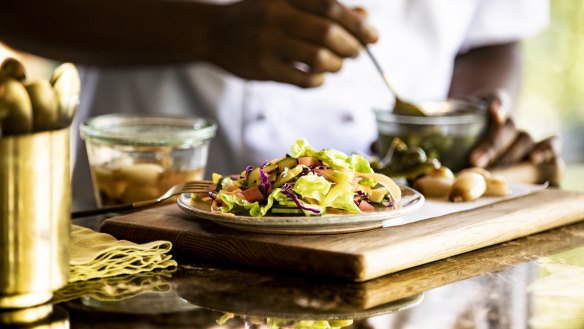
Does Tomlin see himself as a father figure? "Well unfortunately I am, because I'm pushing on now, I'm getting old," he says, dryly. "So I am the godfather, to the lot of them."
His dedication to relentless improvement hasn't dissipated, but that famous temper, it seems, has. "You know, when we were in Sydney we were chasing three hats, we were wanting to be the best restaurant," says Tomlin. "It was big pressure… You were competing with Neil Perry and Tetsuya [Wakuda] and Tony Bilson and those guys."
While that was "brilliant", nowadays, "I'm still pedantic about food, I'm still pedantic about consistency in our product, but… I don't have the temper that I used to have," he says. "We're not saving lives, you know?"
Living in South Africa, with its high levels of poverty, can cast a different light on things, says Tomlin. "You know, I've got kids who live in townships and travel two hours to get to work every day, and they work their arse off… so it puts it into perspective – at the end of the day, for me, it's a plate of food." Of course, "it's still got to be amazing".
It is. My first lunch at Lebombo featured velvety sweetcorn soup and tempura fish with punchy Vietnamese-style dressing, which I almost choked upon as, beyond the sparkling lap pool, a majestic parade unfolded: four elephants, followed by a loping line of giraffes.
A decadent burger – tender strips of aged rump, ponzu mayonnaise, brioche bun – was delivered to my Sweni pool suite, as enormous hippos bobbed like whack-a-moles in the river below.
There was a marvellous bobotie (a traditional Cape Malay spiced mince dish), made lighter with lentils; an exceptional chenin blanc-led Aristargos 2014 from Swartland winemakers David and Nadia Sadie, and heavenly malva pudding in Lebombo's lively, torch-lit boma (enclosure) under a diamond-strewn sky.
My last supper is etched forever in the memory: a full bar spirited to a riverside, safari stories, campfire crackling into the pure night; rifles kept casually within arms' reach; tender kudu (antelope) loin, punchy peppercorn sauce, sweet creamed leeks, more divine wine. I wanted to never leave.
When you combine dining experiences like these with a travel experience like a Singita safari, magic can happen. It feels – true to its name – kind of like a miracle.
DETAILS
The Classic Safari Company offers a four-night gourmet trip to South Africa including two nights at Singita Sweni and two at Singita Lebombo from $A9500 a head twin share (inclusive of full board, food and wine, twice-daily game drives, bush walks accompanied by an experienced guide and road transfers between the airstrip and lodge) plus return charter flights from Johannesburg to the lodges. Details: classicsafaricompany.com.au or phone 1300 130 218.
Restaurant reviews, news and the hottest openings served to your inbox.
Sign up